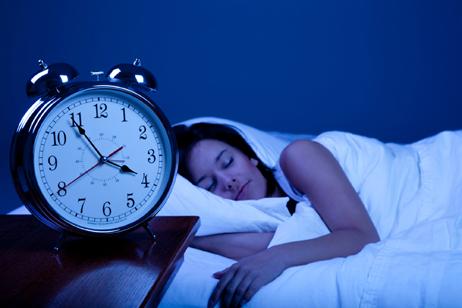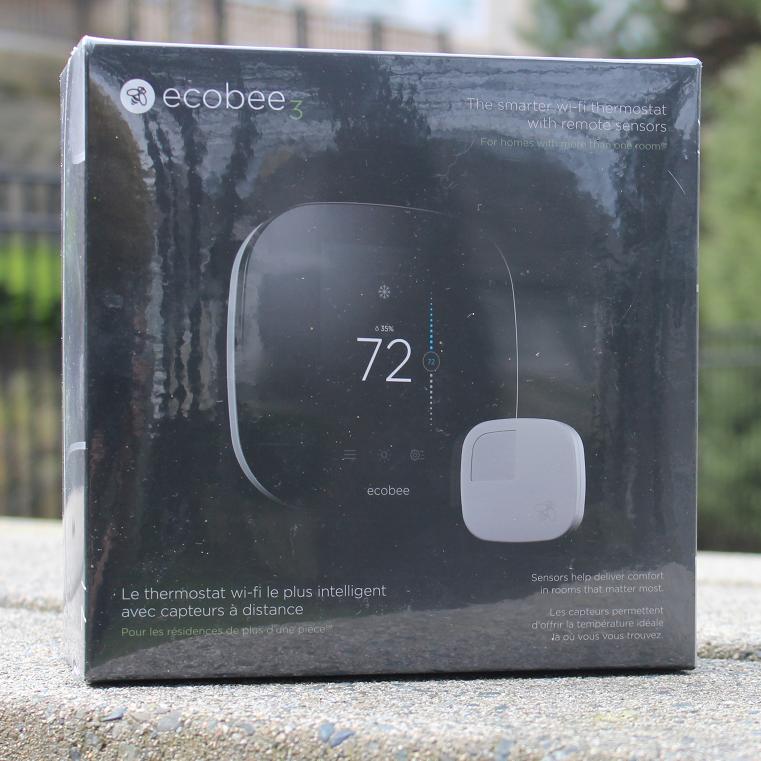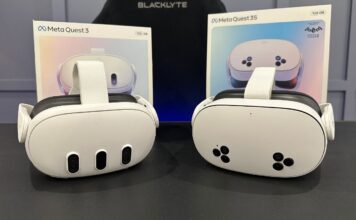 The “Smarten Up” series is a multiple part blog geared at enhancing your everyday life with the help of smart home products. By taking advantage of today’s technology to cater to your needs, you can stop sweating the small stuff and spend more time worrying about the bigger things in life.
The “Smarten Up” series is a multiple part blog geared at enhancing your everyday life with the help of smart home products. By taking advantage of today’s technology to cater to your needs, you can stop sweating the small stuff and spend more time worrying about the bigger things in life.
In this installment of the “Smarten Up” series, we look at maintaining optimal temperatures while you sleep using smart thermostats. This installment focuses in on something we haven’t looked at much in the ecobee3 Wi-Fi Smart Thermostat (also available HomeKit-Enabled.) Ecobee is different than most smart thermostats (and thermostats in general) because it can create an interconnecting system in your home that measures temperature per room rather than drawing from one source and heating the home based on that readout.
What affects our sleep?
I don’t know why it is, but I’ve become a sleep research fiend ever since I became a parent. At first, I obsessed with understanding how a baby and toddler’s sleep cycles worked and made sure that my daughter was always comfortable falling and staying asleep. Once she started sleeping through the night, I realized I wasn’t sleeping as well anymore. I let it go for a while but realized the more tired I was in the mornings and the more caffeine dependent I became, it wasn’t healthy long term. I started going to bed earlier at night but it didn’t seem to help. That problem is fixed now and I actually used a wearable to start myself off on the right foot. You can read my success story by clicking the link below.
One of the major factors in getting deeper and more comfortable sleep is your sleeping temperature. I used to be the type of person that thought the hotter my room was and the more blankets I had, the better. I would fall asleep pretty toasty warm but would wake up drenched in sweat a few hours later and unable to fall asleep again. To switch things up, I’d play around with the number of blankets and nothing would work. Finally, I started fooling around with the temperature in the bedroom and the number of blankets each night until I got it right. I even replaced my trusty memory foam pillow with one that had a cool pad across the top (so that my head wouldn’t get too hot while sunken into the indent.)
 The thing about finding your optimal sleep temperature is that there isn’t one perfect number for all of us. My wife and I are two great examples. She prefers things to be on the cooler side while I prefer things to be warmer. It’s estimated that the optimal room temperatures for most adults tend to be around 65-72°F (approx. 18-22°C) and between 65-70°F (approx. 18-21°C) for toddlers and children. With infants and babies, it may be better to start them off cold rather than too hot. Infants don’t develop sweat glands until they’re around 3 months old, meaning that their bodies cannot naturally encourage themselves to cool down if they are too hot. Overheating while asleep is known to be one of the contributing factors to SIDS.
The thing about finding your optimal sleep temperature is that there isn’t one perfect number for all of us. My wife and I are two great examples. She prefers things to be on the cooler side while I prefer things to be warmer. It’s estimated that the optimal room temperatures for most adults tend to be around 65-72°F (approx. 18-22°C) and between 65-70°F (approx. 18-21°C) for toddlers and children. With infants and babies, it may be better to start them off cold rather than too hot. Infants don’t develop sweat glands until they’re around 3 months old, meaning that their bodies cannot naturally encourage themselves to cool down if they are too hot. Overheating while asleep is known to be one of the contributing factors to SIDS.
Having a smart thermostat at your disposal is one of the easier ways to help achieve maintaining those optimal temperatures for sleep without even having to get out of bed. If you charge your tablet or phone by your bedside, you can easily control the temperature in your house without getting too uncomfortable. Whether you have one centralized thermostat for your entire floor plan (if you’re in a rancher or condo, for example) or have multiple heating sources (such as forced air throughout the main areas and baseboards in the bedrooms,) you can make changes in most cases directly from your app.
Thermostats really just focus in on the temperature in one room at any given time, however. The heat in most homes is determined by the temperature in the hallway or living room (2 of the common places these thermostats tend to be.) This means that a bedroom that relies on that thermostat often ends up too cold or too hot. Nothing’s worse than walking out of a bedroom that’s so cold that icicles could dangle from the ceiling into a living room that’s practically the furnace itself. Supplementing with things like standalone space heaters can be a tripping or fire hazard, especially if you have pets on the prowl at night like I do.
Buzz goes the Ecobee
 We haven’t often talked about the Ecobee 3 Smart thermostat on this blog, but it’s the perfect solution to a problem like this. Ecobee is capable of not only reacting to the temperature at its main access point, but it works in conjunction with secondary sensors to control and spread warmth to all the right rooms. Ecobee is even smart enough to cooperate with the weather. It can adapt to the temperature outside (and thusly inside) and react to it accordingly. It’ll even shut itself down if there’s no need for it. You can then not only control your Ecobee from your phone or tablet, but you can even gain readouts from it telling you how you’re saving power and energy. Ecobee estimates that it can save you approximately 23% on your energy bills each year.
We haven’t often talked about the Ecobee 3 Smart thermostat on this blog, but it’s the perfect solution to a problem like this. Ecobee is capable of not only reacting to the temperature at its main access point, but it works in conjunction with secondary sensors to control and spread warmth to all the right rooms. Ecobee is even smart enough to cooperate with the weather. It can adapt to the temperature outside (and thusly inside) and react to it accordingly. It’ll even shut itself down if there’s no need for it. You can then not only control your Ecobee from your phone or tablet, but you can even gain readouts from it telling you how you’re saving power and energy. Ecobee estimates that it can save you approximately 23% on your energy bills each year.
What this is means is that if you average out your power bills to around $80 a month, the cost savings Ecobee estimates means that you will get your purchase price for it back in just one year!
Ecobee was also one of the first Smarthome product developers that announced that they would be Apple Homekit compatible, so if you’re building your smarthome around that idea, they’re worth giving a look to as well.
One thing to keep in mind with installing any smart thermostat, however, is compatibility with your current furnace. The biggest compatibility difficulty comes with 2 wire furnaces and Ecobee certainly falls into that category. Ecobee is not compatible with 2 wire systems out of the box as it needs power from a C (Common) wire which is more standard with 24v 3 wire systems. The Ecobee3 DOES come, however, with a power extender kit (or PEK.) With additional installation, you can gain the benefits of a mock C-wire and then install the Ecobee in your home.
Ecobee3 does come with one additional sensor and you can add additional sensors for rooms that you’d like monitored for a low additional cost.
If you’re interested in more information about Ecobee, please check out my unboxing and informational video.
With the addition of a good smart thermostat and few tweaks to your sleep routine, you too can maintain a good sleeping temperature and get a more comfortable and better quality sleep.
Browse all Smart Thermostats at BestBuy.ca
Other installments in the “Smarten Up” series include:





































